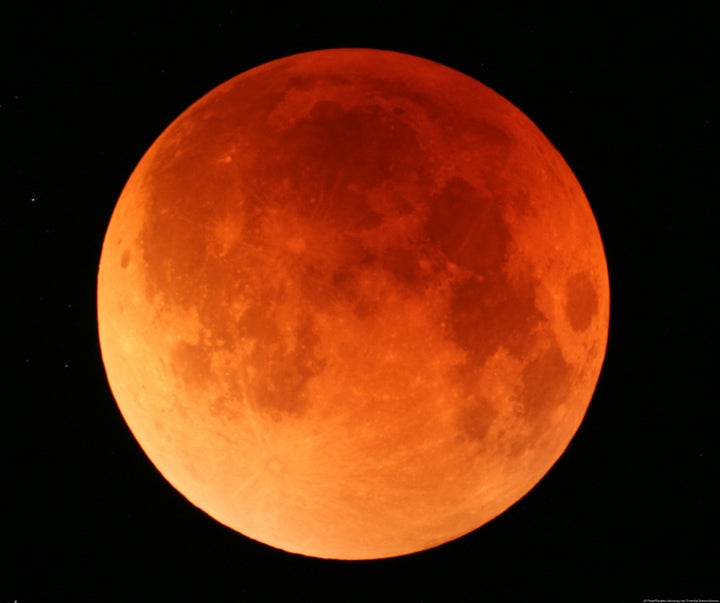
Winter Solstice, Dec. 21, 2010 packs a celestial punch with a full moon and a full lunar eclipse, visible in the Americas if we're lucky enough to have a clear sky and energetic enough to be up. The eclipse will be visible after midnight EST, reaching it's maximum at 3:15 a.m. The last winter solstice eclipse was in 1638, and this one will be topped off by the Ursid meteor shower. Even city lights won't block out all this action.
In New England, winter solstice marks the first day of winter and the beginning of the return of the sun. While the cold deepens, the lengthening days show a welcome turning towards spring's renewal. This gives a message of hope: frozen ground, relentless cold and the darkest season will not last forever.
The dark time of the year is time to catch up on sleep, perhaps mimicking the hibernating animals a bit, and to celebrate with friends. The longer days of summer, in an agrarian society, are ones of the most intense work. This is still true in many summer tourist destinations, where the seasonal warmth brings crowds and income that must last the year round.
Back to hope: preserving hope is one role of religion -- to help people negotiate how to remain hopeful despite adversity and to live in the realm of possibility rather than in despair, no matter how warranted. The winter solstice models this on a celestial level. No problem between science and religion here. When it's darkest, the light begins to return. And this year, the full lunar eclipse reinforces that message. Light and dark are intimately interconnected.
Times of darkness come, and then they go. Darkness offers opportunities to savor things like squash soup, warm wools, cozy fleece and hot chocolate. Gratitude is always in season, and attending to the sensual pleasures of the winter is a useful way to ward off seasonal complaints.
How else can we participate in this cyclic life? In what ways am I hibernating, turning inward, and resting at this time? What new ray of insight am I looking for, to guide me in the coming year? What's being born in me in the dark season, to be sheltered for a while and brought forth in the spring season? Solstice meditations can feed the year ahead.
Enjoying a bonfire or a Yule log, dancing and feasting until the first light of dawn is one way to celebrate this turning of the wheel of the year. Watching the sunrise and the sunset, walking outdoors and connecting with the land are ways to enjoy the day. Try relying on the natural rhythm of light and dark by fasting from electricity use for one day.
Conscious participation in the cycle of the year can reduce stress (quieting the ego-driven 'I should have done it yesterday' syndrome) and bring a sense of participation in an awesome larger whole. Teachings from the Earth can be humbling and invigorating -- the solstice and eclipse help me to begin to understand in my body the massive motion of the Earth as it revolves and orbits, carrying us all.